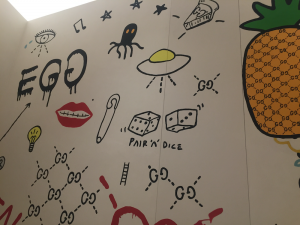Studying abroad on this program helped me learn everything I wanted to learn about Italian design in Milan. I was interested in seeing how a city and country that is known for design, and even labelled as a design capital of the world, goes about designing various products, and how those products are displayed.
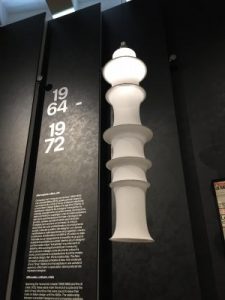
I was surprised how integral design is to Milan. Now that I’m back in the US I’m a bit jealous of how easy it is to access material (I bought so many books). Compared to the US, there is a lot more emphasis in design. I thought this was the most obvious in the amount of space in Milan that was dedicated to creating, teaching, and even selling design. All of the museums we saw and either did or did not go into were spaces dedicated to Italian art and design. The Triennale did the best at explaining design history in Milan, apart from the lectures. Getting to see all of the objects we had been studying and seeing in their creator’s studios in a timeline was actually a bit overwhelming, but helpful… I even found a few objects that we hadn’t gone over but I saw in places we often visited.
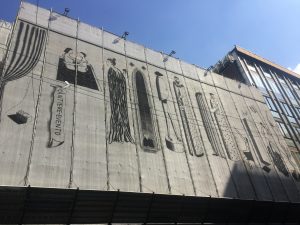
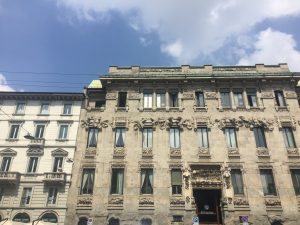 Other smaller spaces for design to exist were the buildings, which varied from older architecture to new. I loved being able to see how newer architecture is applied to older structures, as well as the preservation of historical places like the Duomo or older Liberty-style buildings.
Other smaller spaces for design to exist were the buildings, which varied from older architecture to new. I loved being able to see how newer architecture is applied to older structures, as well as the preservation of historical places like the Duomo or older Liberty-style buildings.
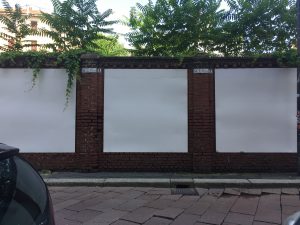
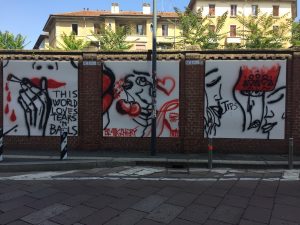
Even on the buildings were other areas for artists or brands to put their work. Although I’m not sure if this was an intentional space for graffiti and posters. But I liked it.
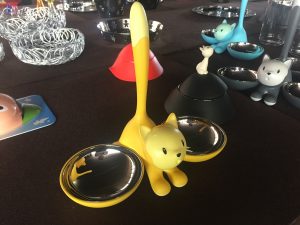
There is also more focus on making products are intended to last (versus planned obsolescence in the US). My favorite part of the study abroad was the visit to Alessi, a company that designs products with the idea of human design. I liked the anthropomorphic and humorous designs that we got to see inside their museum, and the mobile shelves that they were displayed/stored in. One thing that stood out to me in the Alessi presentation was the company’s message, and how they use shapes and forms based on other objects (like buildings, people, animals) to create a bond between the object and its user. Creating products that last was something they emphasized, and I loved that they create longevity by creating objects with personalities and forms that anyone can recognize and love.
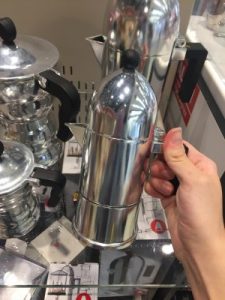
The trip to the gift shop was kind of rushed, and I’m very indecisive, so I only got a small magnet and keychain, but I found more Alessi products in the airport before I left (I thought I was going to miss my flight). While I was trying to decide which coffeemaker to get, I watched kids go up and play with the salt shakers and bottle openers. I liked that I got to see how people would interact with Alessi products on the shelf, and that the kids I saw loved the salt shakers (although I think they thought they were toys) as much as I did. I thought it showed how effective Alessi’s message and playful vibe is, and is something I want to show in my own work.
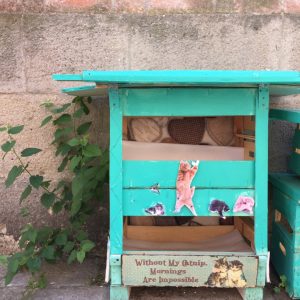
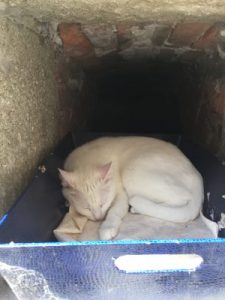 Another, smaller crate was placed in a hole in the wall of the building, and a white cat was sleeping inside.
Another, smaller crate was placed in a hole in the wall of the building, and a white cat was sleeping inside.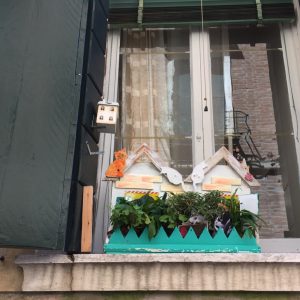 Although it wasn’t part of the Biennale, I thought it was interesting to think about how people build shelters for cats. Cats will sleep almost anywhere, but I think the crates were perfect because they were out of the sun and in a quiet area, away from tourists.
Although it wasn’t part of the Biennale, I thought it was interesting to think about how people build shelters for cats. Cats will sleep almost anywhere, but I think the crates were perfect because they were out of the sun and in a quiet area, away from tourists.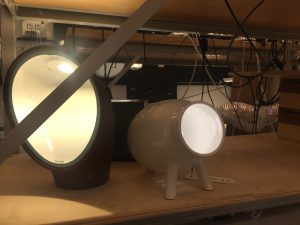
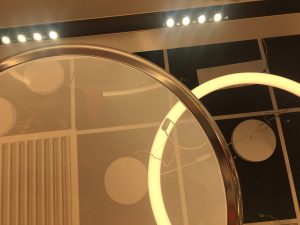
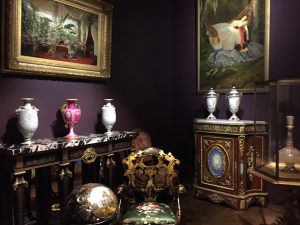
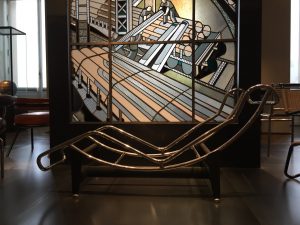
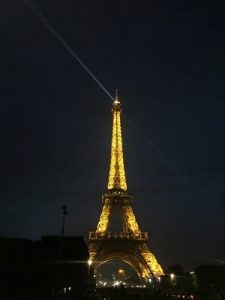
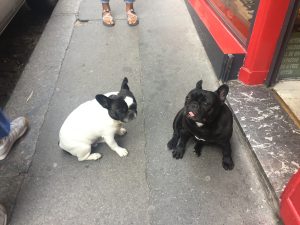
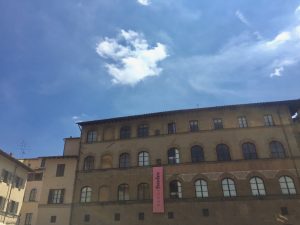 I was surprised more people weren’t inside the Gucci Garden, especially after seeing how crowded the areas in front of the duomo were. I was also surprised this place existed in Florence, which, as a small town, felt like an homage to old design of the Renaissance. But after learning more about the inspiration for Gucci’s design, May Morris and Arts and Crafts era patterns, I guess it makes sense.
I was surprised more people weren’t inside the Gucci Garden, especially after seeing how crowded the areas in front of the duomo were. I was also surprised this place existed in Florence, which, as a small town, felt like an homage to old design of the Renaissance. But after learning more about the inspiration for Gucci’s design, May Morris and Arts and Crafts era patterns, I guess it makes sense.